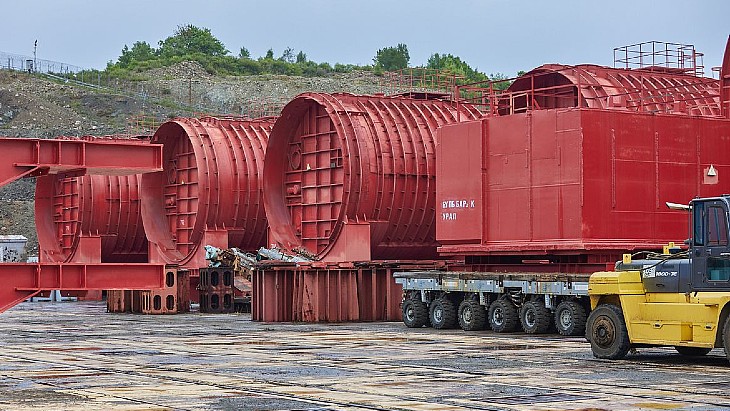Wylfa fuel removal reaches halfway point
 Magnox Ltd has emptied more than half of the used fuel from the Wylfa reactors on Anglesey, in Wales, the UK's Nuclear Decommissioning Authority said today. When operating, Wylfa's two reactors together contained nearly 100,000 fuel elements.
Magnox Ltd has emptied more than half of the used fuel from the Wylfa reactors on Anglesey, in Wales, the UK's Nuclear Decommissioning Authority said today. When operating, Wylfa's two reactors together contained nearly 100,000 fuel elements.Magnox Ltd has emptied more than half of the used fuel from the Wylfa reactors on Anglesey, in Wales, the UK's Nuclear Decommissioning Authority (NDA) said today. When operating, Wylfa's two reactors together contained nearly 100,000 fuel elements.
.jpg) |
| Defueling at Wylfa (Image: NDA) |
Since the end of generation, on 30 December 2015, the site's main focus has been to empty both reactors and send all the remaining used fuel to Sellafield for reprocessing. When Wylfa completes defueling, this will mark the end of one of the UK's largest programmes of nuclear and hazard reduction work, the NDA said. The defuelling programme is expected to be completed before the end of 2019.
Geoff Suitor, head of the Magnox programme for the NDA, said: "Removing all the used nuclear fuel from a station, when it finishes generating electricity, is the first major step in removing the all the hazards and decommissioning the site. Passing the halfway stage is a great sign of the progress being made by our colleagues at Magnox."
The UK's fleet of 11 Magnox reactors were the world’s first commercial nuclear power stations. The earliest, Calder Hall, came online in 1956 and Wylfa was the last to finish generating low-carbon electricity. In almost 60 years, around five million Magnox fuel elements were manufactured for UK nuclear power stations. Once the reactors are empty, and all the fuel elements have been dispatched to Sellafield, over 99% of the site's radiological hazard will have been removed.
Researched and written
by World Nuclear News
_17992.jpg)
_75800.jpg)







_88592.jpg)
_66488.jpg)

